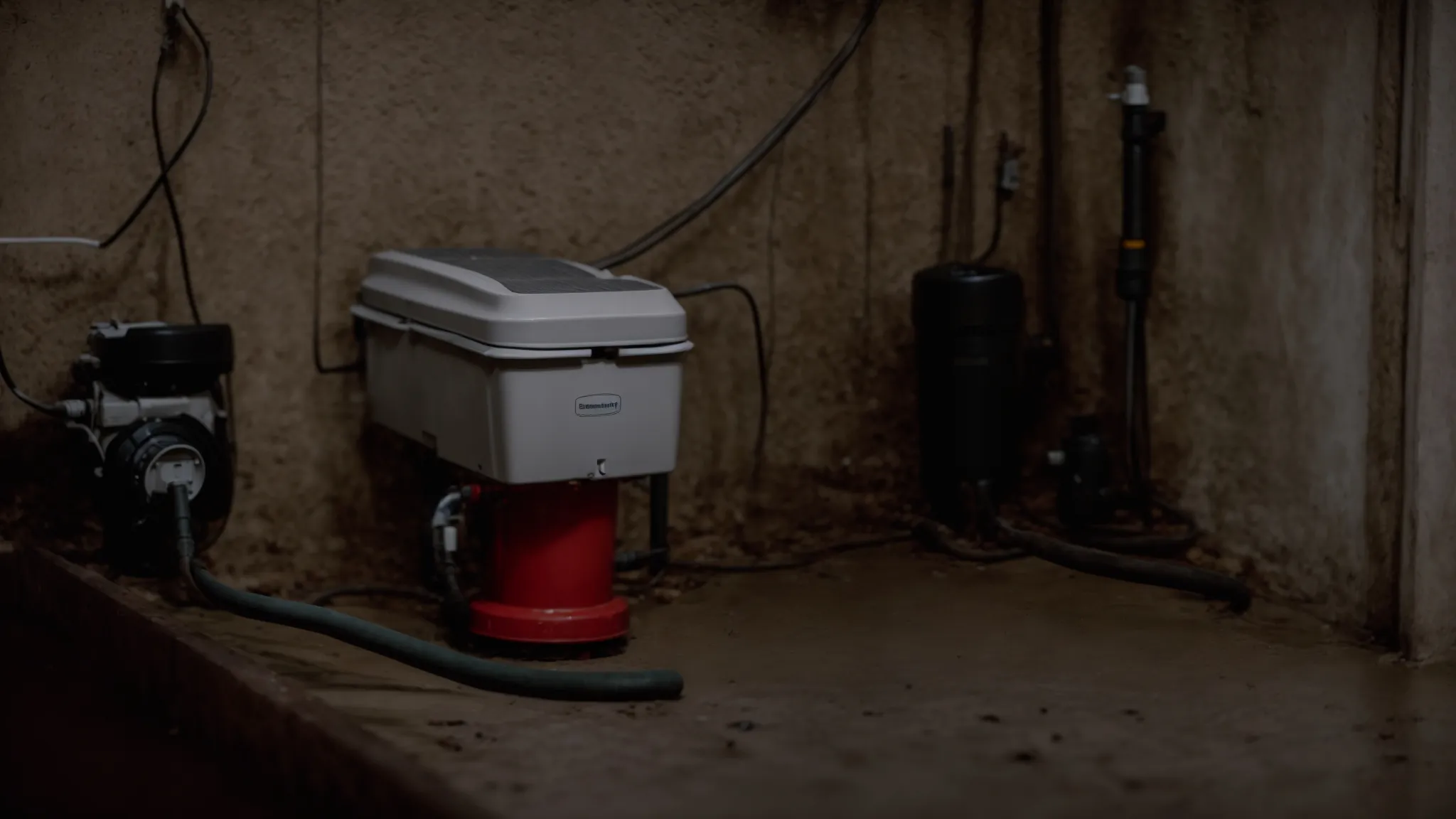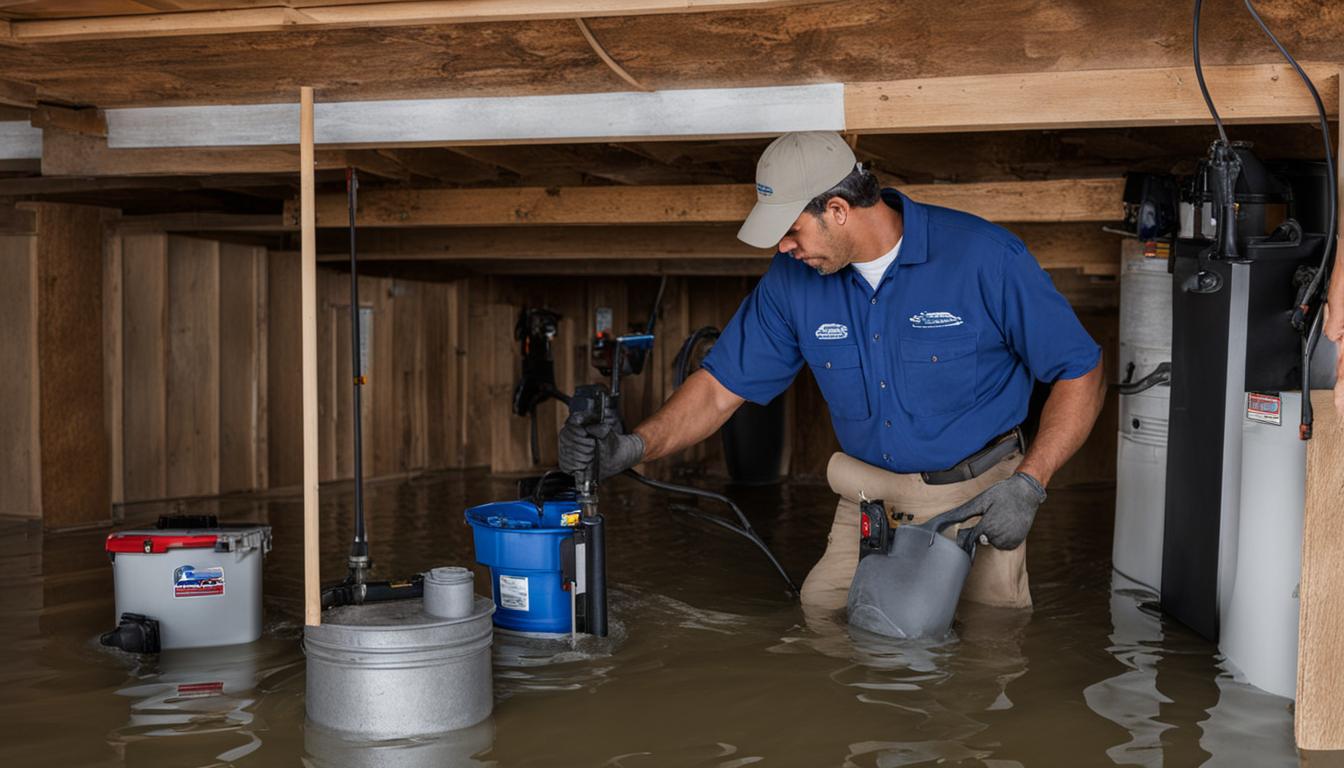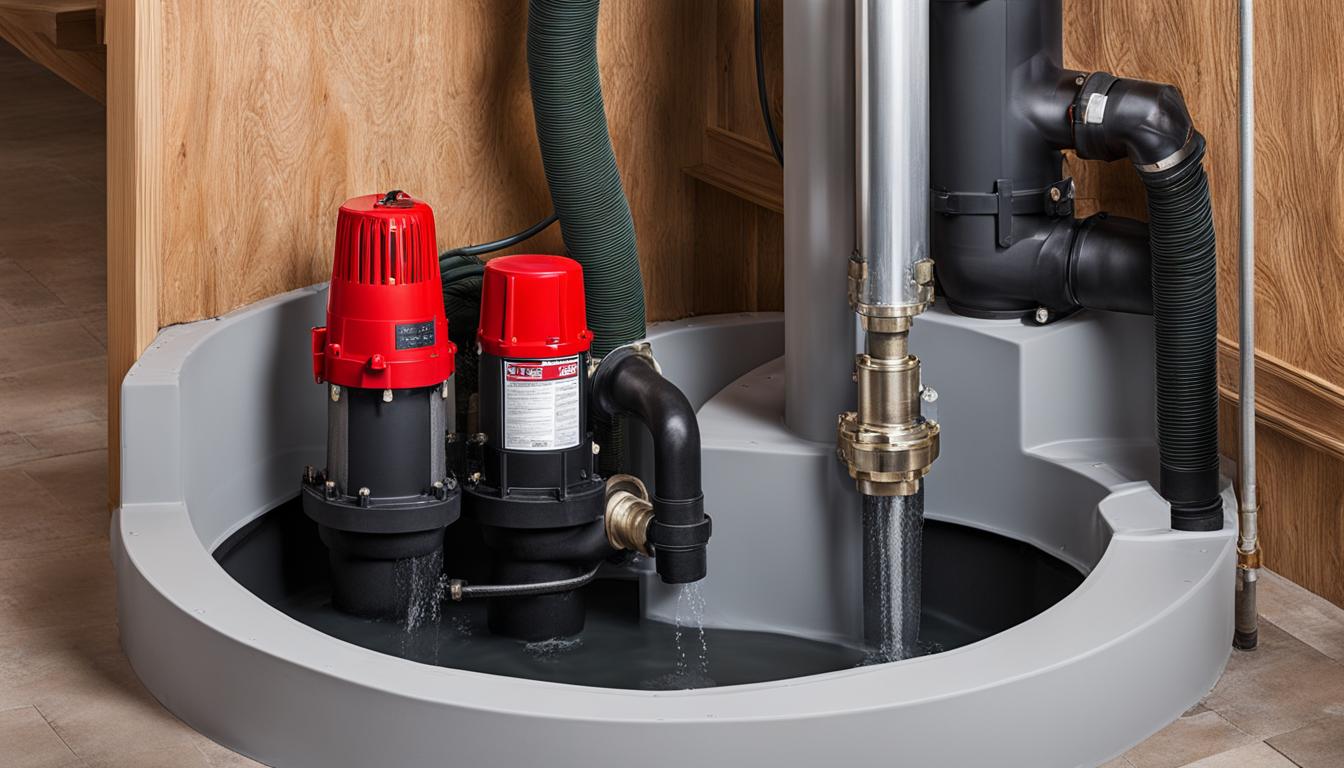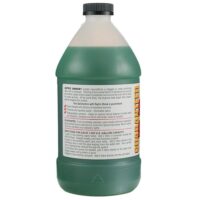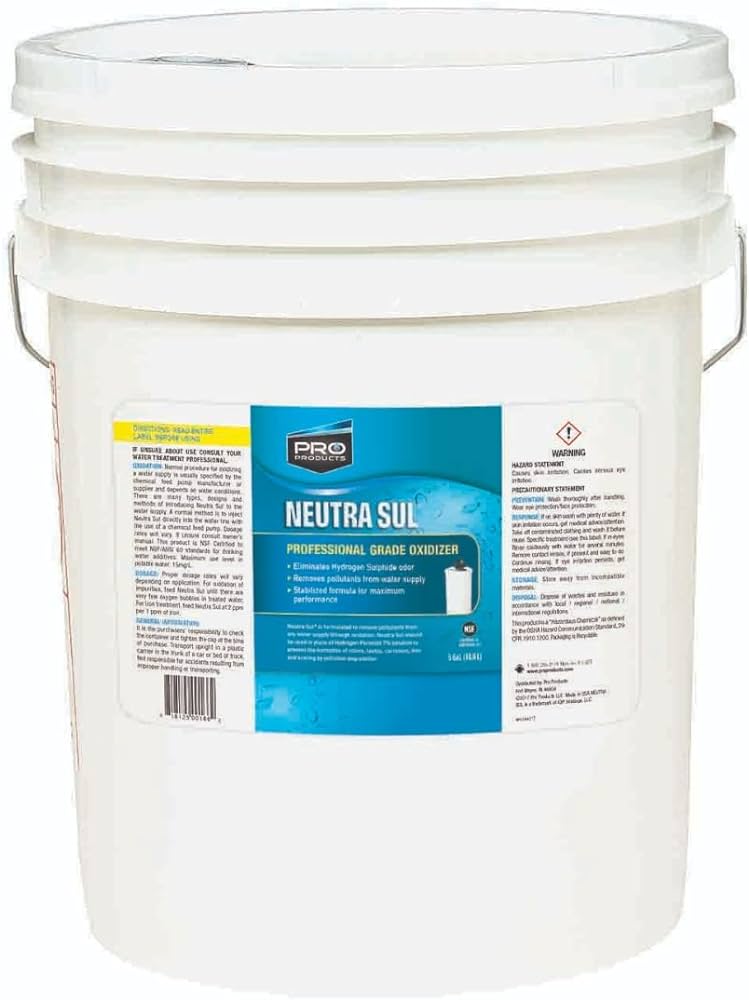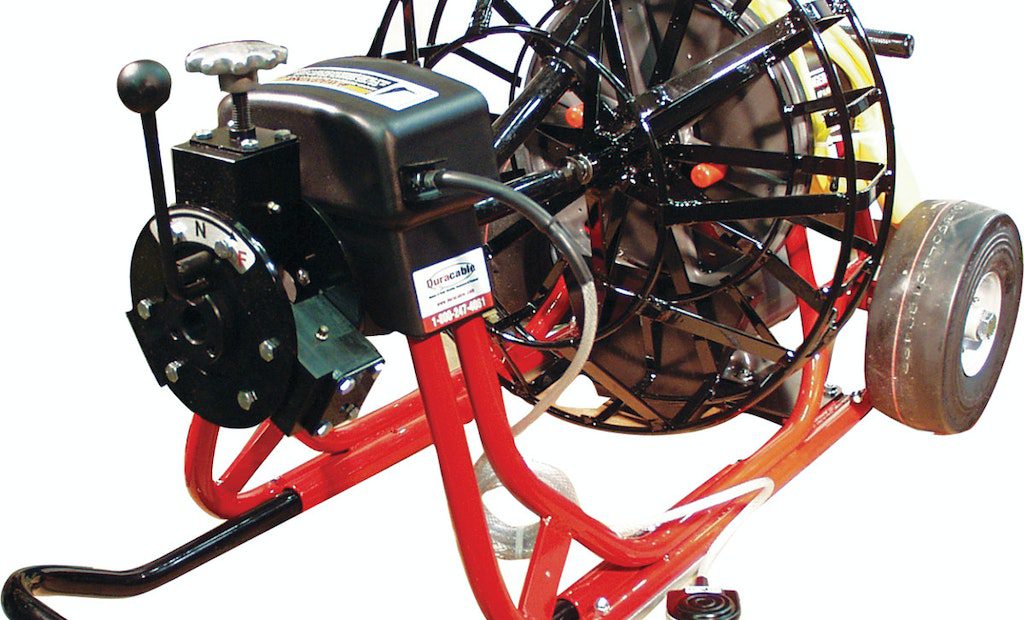Sump Pump Battery Backup: Life Expectancy Explained
As a fortress against the relentless siege of water, your sump pump stands guard over the lowest frontier of your home.
The lifeline of this steadfast sentinel?
Its battery—a silent, potent ally cloaked in anonymity beneath the stairs or within darkened utility closets.
Yet, even the mightiest of warriors bows before time, and thus, understanding the lifecycle of your sump pump’s battery backup is pivotal.
Ignorance here is a floodgate awaiting failure, while wisdom could be the bulwark that safeguards hearth and home.
Sustain your interest and you shall uncover secrets to extend the watch of your unsung household champion.
Key Takeaways
- Various Battery Types, Such as Lead-Acid and AGM, Offer Different Lifespans and Maintenance Needs for Sump Pump Backups
- Charging and Discharging Cycles, Along With Usage Patterns, Significantly Influence the Lifespan of Sump Pump Batteries
- Extreme Temperatures and Improper Charging Practices Can Lead to Early Battery Failure, Emphasizing the Need for Environmental Regulation and Adherence to Guidelines
- Routine Inspections and Maintenance Are Crucial to Prolonging a Sump Pump Battery’s Life and Ensuring Its Reliability During Floods
- The Operational Frequency of the Sump Pump Correlates With the Backup Battery’s Longevity, With Consistent Use Possibly Leading to Increased Endurance
Understanding the Basics of Sump Pump Battery Life

Beneath our homes lies an unsung hero, the sump pump—often coupled with its loyal sidekick, the battery backup.
Much like an ever-vigilant sentinel, this dynamic duo stands guard against the onslaught of floods, ensuring our basements remain dry and our memories unflooded.
As the sump pump zealously performs its task, it falls upon the shoulders of its battery backup to provide uninterrupted power when the electric grid falters.
Within this fortress of dependability, various battery breeds reside, each with its own merits and lifespans.
My quest delves into the heart of these stalwart storehouses of energy, dissecting not only their genetic makeup but also the environmental and mechanical elements that shape their longevity.
The tales of their existence whisper invaluable insights into their expected life chapters, empowering homeowners to bestow upon them the care they require to age gracefully.
Identifying the Types of Batteries Used in Backups
Embarking on the journey to identify the power guardians for our subterranean allies reveals a pantheon of options. Lead-acid batteries stand as the stalwarts among their kind, revered for their reliability and cost-effectiveness, a popular choice for many a homeowner.
The agéd lead-acid is flanked by maintenance-free, absorbent glass mat (AGM) batteries: silent sentries that forfeit the need for regular water top-offs while offering resilience to the vicissitudes of temperature and shock:
| Type of Battery | Characteristics | Lifespan |
|---|---|---|
| Lead-acid | Cost-effective, reliable, requires maintenance | 4-6 years |
| AGM | Maintenance-free, temperature resilient, shock-resistant | 5-7 years |
Factors That Influence Battery Lifespan
Peering into the myriad factors that mold the lifespan of these valiant batteries reveals that frequent cycles of charging and discharging serve as the double-edged sword that dictates their vitality: It’s a meticulous balance to maintain. Usage patterns inscribe an indelible mark on battery cells — much like the footprints of time — where more frequent engagements in safeguarding our sumps treasure trove can hasten their journey to the end.
| Influencing Factor | Impact on Lifespan |
|---|---|
| Charging/Discharging Cycles | More cycles can shorten battery life |
| Usage Patterns | Frequent use may accelerate aging |
The ambient embrace of the environment whispers its own influence over these sentinels of power. A humid chamber or one kissed too often by the sun’s wrath can besiege the batteries, leaving them weary before their time. Like warriors clad in armor, batteries must be shielded from extremes, basking instead in the mild aura of moderation to extend their watch.
As the sentinel in your basement stands guard, the unsung sump pump’s rhythmic hum is a lullaby of security against nature’s whims. But even the most vigilant guardians grow weary; let’s uncover the telltale signs that herald the need for a noble battery’s dignified retirement.
How to Determine When Your Sump Pump Battery Needs Replacement

Traversing the intricate labyrinth of sump pump maintenance, I stand at a crossroads where vigilance meets foresight – the vital moment to discern when the heartbeat of my sump pump, its battery backup, signals distress.
Attuned to the subtleties of its performance, I ready myself to recognize the harbingers of failure and embrace the due diligence of testing.
This is my covenant with my home’s silent protector: to ensure its pulsing energy core is validated in health, unwavering in its commitment to guard against the tides.
In the passages ahead, I shall unveil the telltale omens of a battery’s decline and the rites of verifying its vitality, guarding the lifeblood that empowers this subterranean shield.
Signs of Battery Failure to Look Out For
As I navigate the lifecycle of my humble home’s subterranean guardian, I discern the subtler nuances of battery health. A dimming light, a slower start, a subdued hum: these are the initial whispers of a battery starting to falter.
Alas, the more overt signs cannot escape my watchful eye; a full silence when an alarm should sound, or a sump pump immobile in the face of rising waters, signals an undeniable plea for battery replacement. These beacons of distress cannot be ignored if my fortress is to maintain its resilience against nature’s caprice:
- A silent alarm when it should echo its warning call
- Lethargic starts, as if the battery strains against an invisible weight
- The dreaded stillness – a pump that does not engage amidst encroaching waters
Sustaining the vigil, my duty aligns with maintaining the integrity of this bulwark’s power source. It demands the sharpness of perception to catch the early signs and the resolve to act before whispers become wails of a battery beyond salvation.
Testing Your Backup System’s Battery Health
Like an alchemist searching for signs of transformation, I test the currents of life within my sump pump’s backup battery. Unearthing a multimeter, I probe the terminals, my eyes intent on the readings that spell out the state of charge; a voltage less than expected whispers of a battery whose life force dwindles.
Engaging my backup battery in a simulated power outage, I observe its response — does it awaken from its slumber to stand in for the main sump pump with vigor, or does it falter? This trial by fire reveals the truth of its strength, compelling me to act should its lifeblood show signs of ebbing away.
With vigilant observation, you’ve decoded the cryptic signs your sump pump battery whispers before its final bow. Now, let’s embark on a quest to stretch the life-span of this silent guardian beneath your feet.
Maximizing Your Sump Pump Battery’s Longevity

Amid the torrential dance of rain above, our subterranean champion — the sump pump — and its tireless battery backup, demand more than a cursory nod; they compel active stewardship to sustain their guardianship over our sanctuaries.
My narrative now twines around the vital hymns of routine maintenance and the doctrines of best practices crucial for nurturing the longevity of this unseen but invaluable ally.
I stand as a bearer of the torch of knowledge, illuminating paths to not merely preserving but enhancing the robustness of our bulwark’s energy source, ensuring that when the skies unleash their fury, we are shielded by an unwavering force.
Routine Maintenance Tips for Prolonged Life
Embracing the role of keeper to this subterranean defender, I commit to the periodic pilgrimage of inspections, ensuring connections remain corrosion-free and tight, as solid grounding is to electricity as trust is to kinship. My method is to peer with an eagle’s eye for the subtle encroachment of rust or loose wirings that, left unattended, would erode the efficacy of my vigilant sump pump’s power source.
My vigil extends to the artful practice of charging supervision; neither too much nor too little, as both are akin to the wings of Icarus, daring to defy the natural order. I ensure that the charging unit’s settings are attuned flawlessly to the manufacturer’s recommendations, instilling in me a quiet assurance that the battery’s life force is nurtured under my attentive gaze.
Best Practices for Extending Battery Performance
Enveloping my sump pump battery in the cocoon of optimal conditions, I treasure its health much as a gardener treasures the blooming of a rare orchid: through steadfast adherence to ideal practices. I eschew the extremities of temperature, for batteries, like temperate souls, thrive in environments neither too hot nor too cold.
| Best Practice | Benefit |
|---|---|
| Temperature Regulation | Prevents capacity loss and prolongs battery efficiency |
Charging the battery mirrors the delicate waltz between precision and patience: I commit to the rhythm set by the manufacturer’s guidelines, for deviation is the puppeteer of premature battery demise. Under my watchful eye, the charging parameters stay within their golden ratio, ensuring the well-being of my charge:
| Protocol Element | Expected Outcome |
|---|---|
| Adhering to Manufacturer’s Charging Guidelines | Optimizes battery life and maintains peak performance |
Keep your sump pump’s beating heart alive longer; it’s not just a fable, it’s a craft. Now, let’s spark the conversation about how the rhythm of usage breathes life or whispers wear into these tireless guardians.
The Impact of Usage Frequency on Backup Batteries

Mulling over the intricate tapestry of battery longevity, my contemplation zeroes in on the profound impact that the frequency of sump pump use imprints upon the lifespan of its battery backup.
Like a heart with its varied rhythms, my pump’s dutiful cycle of activity—or serenity—interweaves a narrative on the endurance of the power reserve it leans upon.
Treading forward, my attention pivots to evaluate my pump’s operational tempo and discern the intricate relationship between its pulsing duty cycle and the thread of life expectancy that holds its energy source together.
Analyzing How Often You Use Your Sump Pump
In my tenure as a guardian of my basement’s tranquility, I’ve noticed the frequency of my sump pump’s engagement plays a pivotal role in shaping the tapestry of its backup battery’s life. My observations lead me to understand that a battery coddled by sporadic use may recline in longevity, while its brethren, stirred more regularly by demand, may tread a swifter path toward replacement.
I stand watchful of my home’s needs, aware that each activation of the sump pump is a note in the symphony of its backup battery’s lifespan. Through keen analysis of these operational patterns, I seize the capacity to foresee the horizon of my battery’s service, thus ensuring its readiness to answer the clarion call of duty without fail.
The Correlation Between Usage and Life Expectancy
Every initiation of my guard against water’s wrath, the sump pump, etches a fine line on its companion battery’s life canvas. The frequency in which this sentinel springs into action intertwines directly with the vitality of its power source, prophesying the longevity or precipitous decline of this silent shield.
Like the enduring heart of a seasoned runner compared to that of a sporadic sprinter, a sump pump battery cultivated through steady use may outlast one startled into sudden service:
- Consistent operational demands may foster a robust life span for batteries, imbuing endurance through regular rhythm.
- An ecosystem of usage marked by infrequent stirrings may, in contrast, lead to a battery reserve with a proclivity for premature wear.
As the protector of my home’s dry haven, I heed the implicit cadence of usage that guides my sump pump battery’s journey through time. My vigilance ensures that each pulse of power is harmonized with the silent promise of an enduring defense.
Conclusion
In conclusion, the sump pump battery backup is a critical component in safeguarding our homes against floods, with its lifespan being a vital factor to consider.
Lead-acid batteries, known for reliability and maintenance needs, typically last 4-6 years, while AGM batteries offer a maintenance-free alternative with a lifespan of 5-7 years.
The longevity of these batteries is influenced by factors such as charging and discharging cycles and usage patterns, where more frequent use may accelerate battery aging.
Homeowners must remain vigilant for signs of battery failure, such as a silent alarm or a pump that won’t engage, and regularly test the battery’s health to ensure dependable operation.
To maximize battery life, routine maintenance is key—keeping connections corrosion-free, ensuring proper charging, and maintaining a moderate temperature environment.
Understanding the relationship between usage frequency and battery life expectancy enables homeowners to anticipate and prepare for eventual battery replacement, ensuring continuous protection of their basements from water damage.
